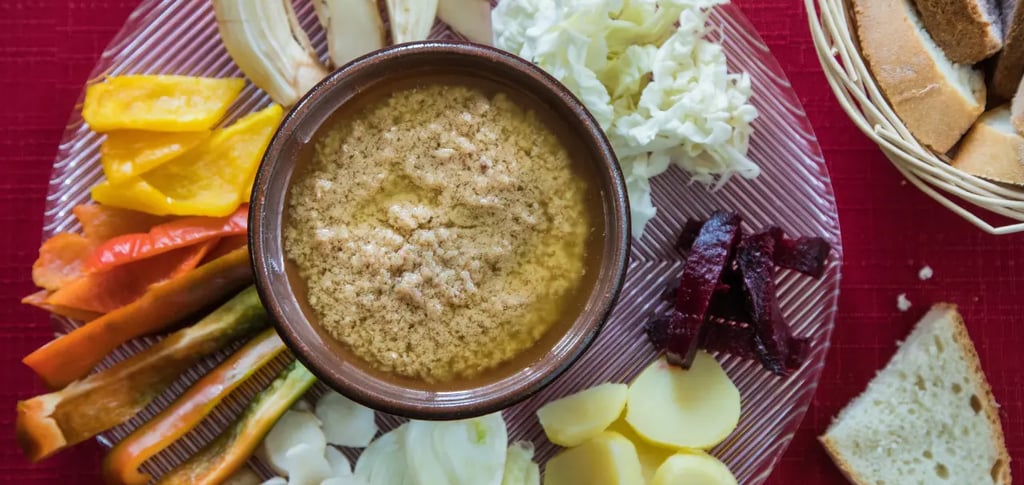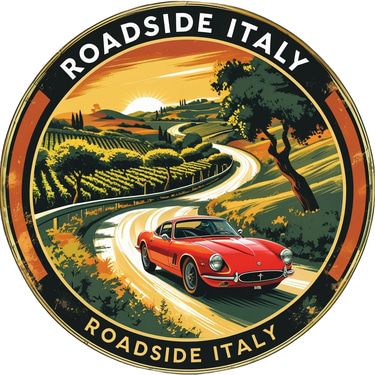Bagna Cauda: Piedmont’s Garlic-Infused Winter Ritual
In Piedmont, vegetables take a hot garlic-and-anchovy bath, turning dinner into a cozy, hours-long feast shared with friends by the fire.
PIEMONTEFOOD


Picture a chilly autumn night in the hills of Piedmont: friends gathered around a table, laughter mixing with the irresistible aroma of garlic, anchovies, and olive oil. In the center, a steaming pot invites everyone to dip and share. Bagna cauda is not just a sauce—it’s a ritual, a slow, cozy way to spend hours together while the world outside grows cold.
History and Origins:
The name bagna cauda literally means “hot bath” in Piedmontese dialect, and that’s exactly what it is—a hot bath for vegetables. It was born in the vineyards during the grape harvest as a way for workers to celebrate together. Anchovies, preserved in salt and brought from Liguria through ancient trade routes, were mixed with garlic and olive oil, then kept warm in earthenware pots for hours while people dipped seasonal vegetables. This was a peasant feast, simple but full of flavor, that became a treasured regional tradition.
Ingredients and Preparation:
The base is simple but bold: plenty of garlic, salty anchovies, good extra virgin olive oil, and sometimes a touch of butter or milk to soften the flavor. The garlic is sliced thin and gently simmered until mellow, then anchovies are added and dissolved into the oil, creating a rich, savory sauce. It’s served warm in small pots called fujot, each with a candle or flame underneath to keep it hot. Around it, baskets of vegetables—raw and cooked—are offered: cardoons, peppers, Jerusalem artichokes, boiled potatoes, cabbage, fennel, and more. Everyone dips their vegetables straight into the pot, making the meal as social as it is delicious.
Where to Taste It:
Autumn and winter are the seasons to enjoy bagna cauda, especially in Asti, Alba, and Monferrato. In Asti, Ristorante Tacabanda serves it in the classic style with endless vegetables. In Alba, Osteria del Vignaiolo pairs it with a glass of Barbera for a perfect local match. The town of Nizza Monferrato celebrates it every November with the Bagna Cauda Day festival, where restaurants all over the region serve the dish simultaneously, turning Piedmont into one giant communal table.
Conclusion:
Sharing bagna cauda isn’t just about eating—it’s about stories, friendship, and slowing down to savor both food and company. One dip, and you’ll understand why Piedmontese winters are never lonely.
